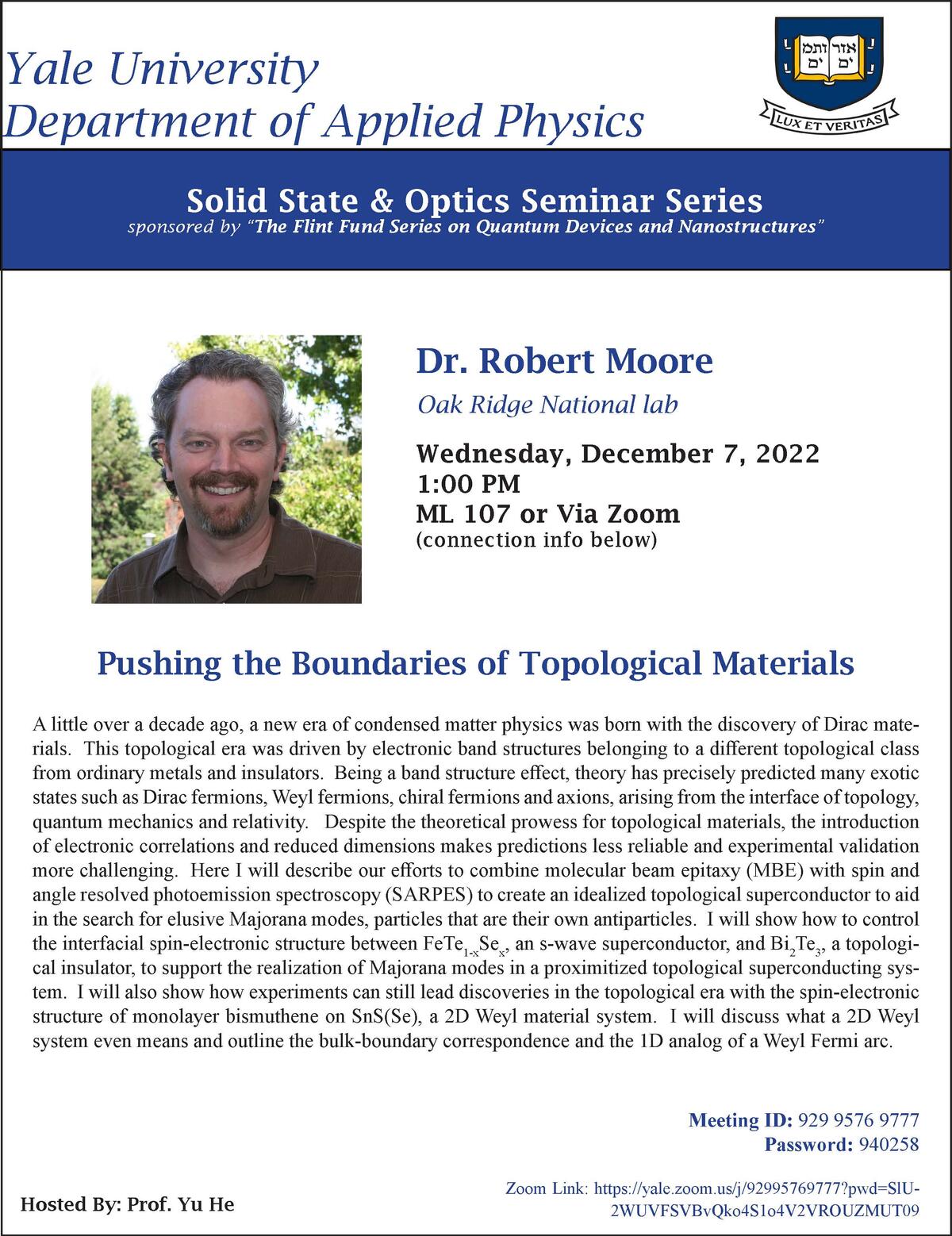Solid State & Optics Seminar
sponsored by “The Flint Fund Series on Quantum Devices and Nanostructures”
Date : Wednesday, 12/7/22
Time: 1:00PM
Location: Mason Lab, Room 107
Zoom Link: https://yale.zoom.us/j/92995769777?pwd=SlU2WUVFSVBvQko4S1o4V2VROUZMUT09
Passcode: 940258
Speaker: Dr. Robert Moore, Oak Ridge National Lab
Title: Pushing the Boundaries of Topological Materials
Abstract:
A little over a decade ago, a new era of condensed matter physics was born with the discovery of Dirac materials. This topological era was driven by electronic band structures belonging to a different topological class from ordinary metals and insulators. Being a band structure effect, theory has precisely predicted many exotic states such as Dirac fermions, Weyl fermions, chiral fermions and axions, arising from the interface of topology, quantum mechanics and relativity. Despite the theoretical prowess for topological materials, the introduction of electronic correlations and reduced dimensions makes predictions less reliable and experimental validation more challenging. Here I will describe our efforts to combine molecular beam epitaxy (MBE) with spin and angle resolved photoemission spectroscopy (SARPES) to create an idealized topological superconductor to aid in the search for elusive Majorana modes, particles that are their own antiparticles. I will show how to control the interfacial spin-electronic structure between FeTe1-xSex, an s-wave superconductor, and Bi2Te3, a topological insulator, to support the realization of Majorana modes in a proximitized topological superconducting system. I will also show how experiments can still lead discoveries in the topological era with the spin-electronic structure of monolayer bismuthene on SnS(Se), a 2D Weyl material system. I will discuss what a 2D Weyl system even means and outline the bulk-boundary correspondence and the 1D analog of a Weyl Fermi arc.
To sign up for a 1-on-1 session with Dr. Robert Moore, visit the Sign-Up Sheet
